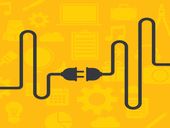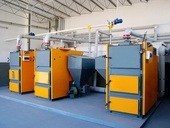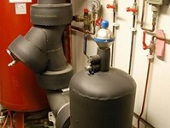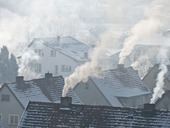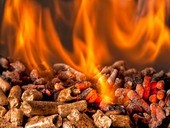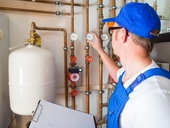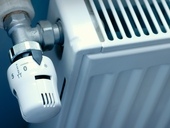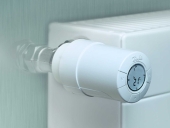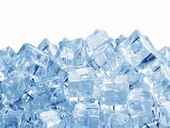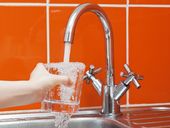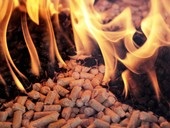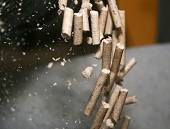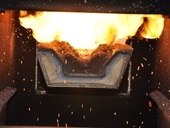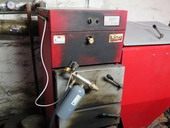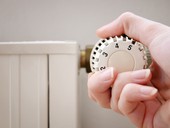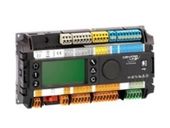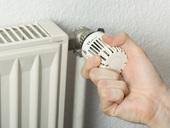At present, it is establishing the second edition of the standard ČSN 33 2000-7-753: Low-voltage electrical installations – Part 7-753: Requirements for special installations or locations – Heating cables and embedded heating systems, which already includes other requirements associated with this type of heating, generalized for any use.
Archiv článků od 9.11.2015 do 20.2.2016
Interview about the direction of ecological heating Czech households and about looming problems with subsidies for the replacement of old boilers with Mark Rebicek, founder of the distribution companies of wood pellets CDP and director of Kloboucka Energo, which is a producer of ENplus certified pellets Waldera.
The article refers to the new European subsidies for the replacement of boilers in the Czech republic. The author responds to the statement of the Minister of the Enviroment Richard Brabec who said, that the much debated permision to subsidize boilers, which were not verified by an independent authorized person, was necessary because of the requirements of the European legislation.
This article reflects the author's view on the issue of emissions from the combustion of solid fuels in small combustion appliances and theirs decreasing by subsidy for boilers’ change. For maximum efficiency of subsidies, author recommends: 1) replace old boilers with modern gasification and automatic boilers, 2) subsidize only boilers certified by independent accredited laboratory, 3) optimize settings of newly installed boiler according to the measurement of flue gas composition and efficiency, directly at the new operator, 4) periodically check emission parameters in real conditions.
Article is dealing with gasification principles and gasifiers. Gasification is process for gas producing from solid fuels (coal, wastes, biomass). Producer gas can be used in cogeneration unit (piston engine or combustion turbine) for generating of heat and electricity with higher efficiency in comparison with combustion in boiler. All processes in gasifier taking place with regulated supply of gasification media (air, oxygen or steam) and reaction heat.
The article returns to the topic of measuring of heat consumption. This obligation is based on Directive 2015/27 / EU, nevertheless during the creation of our national rules, we have encountered a significant problems related to the correct interpretation of concepts of measurements and indications.
Radiators as well as other technical equipment in buildings, and generally any equipment in a building, require occasional maintenance and cleaning. While on the surfaces of floor, furniture, windows, doors, hygienic facilities, etc. there is usually held regular cleaning, elements of heating systems, including the end elements in the interior, are often neglected. The aim of this work is to familiarize with the results of measurements carried out within the framework of experiments focused on microbial load of different constructional designed radiators located both in public buildings and private homes.
It lasted incredibly long, but we finally have an updated prescription, to which all owners of apartment buildings were anxiously waiting. Until now valid Decree no. 372/2001 Coll. is becoming past since the start of January 2016 and a newly heat for each unit to allocate according to Decree no. 269/2015 Coll.
The paper sums up the current legislation for refrigerants and focuses on Regulation 517/2014 of the European parliament and the Council on fluorinated greenhouse gases which repeals the Regulation 842/2006. The major requirements for operation, service and delivery are presented in the paper. At the end of the paper the predicted evolution of major types of refrigerants for heat pump is given.
Pellet heating systems are a fairly new technology. Consequently there may be problems caused by the lack of experience with this technology. This also applies to pellet storage installations. Pellet stores have to fulfil a number of requirements to make sure that the pellet quality is maintained and safe operation is guaranteed.
The ENplus storage guideline describes the requirements to preserve fuel quality and provide safe storage of pellets for both professionals (such as installers) and consumers. It covers the technical properties of pellet stores as well as information on safe and adequate operation of these stores. They do not replace installation guidelines and instructions from pellet boiler/storage manufacturers but do take precedence over advice from installers/distributors. Planning aids and filling regulations from manufacturers of pellet storage, extraction systems and pellet boilers must be followed.
Professional practices are the cornerstone of successful market development.
Demands on the technical level of newly manufactured small boilers designed for burning solid fuels in a relatively short time fundamentally changed. The constant tightening of legislative requirements on emission limits and the effectiveness of these heat sources lead to finding new ways to be in residential boilers cleanly and efficiently produce heat from coal and biomass.
Methods of cost allocation in apartment buildings have undergone significant changes in recent years. The article offers a comprehensive overview of cost allocation methods in multi-dwelling units according to applicable regulations. It is intended mainly for owners of residential units, board members of homeowners associations, managers of housing cooperatives or individuals and companies managing residential buildings.
Cost allocation in apartment buildings is currently governed by two laws: Act No. 67/2013 Coll. and the new Civil Code No. 89/2012 Coll. These laws governed cost allocation in calendar year 2014 and apply also for 2015. The heating and hot water supply costs in MDUs from 2016 onwards will be allocated pursuant to the new decree No. 269/2015 Coll. and the amended Act No. 67/2013 Coll.
The article presents a technical solution designed for domestic boilers. The purpose of the invention is to enable comfortable and especially regular removal of solid deposits on heat transfer surface of boilers by pneumatic pulses generated in a shockwave generator. The shockwave generator is a source of pressurized gaseous medium that is through one or more nozzles directed to the heat transfer surface of the boiler. Dynamic stream of gaseous medium leads to erosion of deposits on the surface and helps to maintain high efficiency of a boiler.
In a previous article we described current problems of district heating. Their creation is shared by all stakeholders - customers, suppliers and the state. The only difference is that while consumers and suppliers are more or less at the mercy of events, the state is the one who will decide on the future success or failure of the sector. And in this role still failing. The state should support the heating industry, but instead he openly harms.
This paper describes the controller functions, types of control units and from which all components can be composed. Next part is about explaining how to program the controllers can take place, what are the types of controlling and communication protocols that are most frequently used for connection to field devices and supervisor. The whole interpretation is conducted through first theoretical introduction followed by practical example. The whole paper is written exclusively on control units, which are used in building automation and belonging to the group DDC (Direct Digital Control) systems. These controllers are most often used to HVAC systems (Heat, Ventilation and Air Condition). The aim of these systems is to achieve thermal comfort in buildings. The whole industry is then called Measurement and Control. Specific application is e.g. controlling of Air handling unit according to pre-defined project.
The amount of heat consumed by households for heating will continue to decline. The causes of this trend, we can identify more, but they all have one common feature - the growing cost of heat. It is growing because of rising prices of inputs (raw materials, technology, labor) but also due to decreasing consumption of heat (climate change, saving measures).
The heating period 2014/2015 in Prague based on the observation of Prague-Karlov station was with 222 days, a little shorter, and with an average temperature of 6,4 °C, slightly warmer than the long-term average. Basic characteristic of heat demand for heating is 2803 D°(19) degree days, heat demand is much lower than the long-term average of 3227 D°(19). It's the second lowest number of degree days of the heating period since the beginning of the century.
zpět na aktuální články
